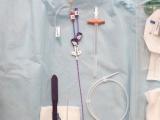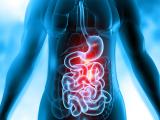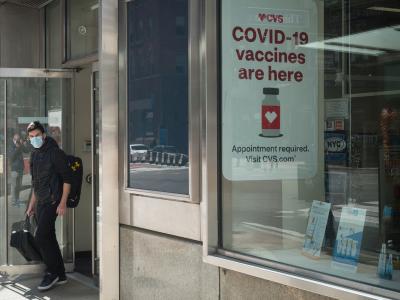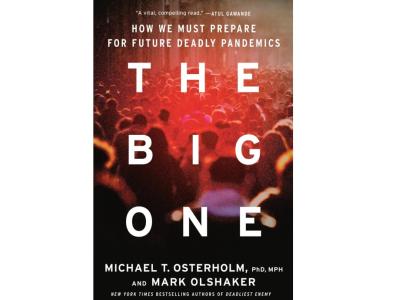A phase 3 trial of delamanid, a newer oral drug for treating multidrug-resistant tuberculosis (MDR-TB), found no statistically significant reduction in time to sputum culture conversion when compared to placebo, but that it was safe and well tolerated.
Delamanid is one of the newer drugs for treating TB, but there are lingering concerns about side effects, including an increase in the QT interval, which can cause heart rhythm problems. The World Health Organization (WHO) has classified delamanid as a group C drug, because though phase 2 and 3 clinical trials have shown that it effective and well tolerated, strong evidence for its use as a priority drug is still lacking.
An international research group published its findings of the trial, which spanned four global regions, on Jan 7 in an early online edition of The Lancet Respiratory Medicine.
Sensitivity analysis favors delamanid inclusion
The study took place at 17 sites in seven countries (Estonia, Latvia, Lithuania, Moldova, Peru, the Philippines, and South Africa), enrolling adults with pulmonary MDR-TB who received either delamanid (100 milligram [mg]) twice a day for 2 months, followed by a 200-mg once-daily dose for 4 months or placebo. Both groups received their usual optimized background treatment regimen.
Of patients screened between September 2011 and November 2013, 511 were randomly assigned—342 to delamanid and 170 to placebo. Of the group, 327 patients were culture-positive for MDR-TB at baseline and made up the efficacy analysis: 226 in the delamanid group and 101 in the placebo group.
The median time to sputum culture conversion was 51 days in those who received delamanid and 57 days in patients who got placebo, which was nonsignificant based on a hazard ratio of 1.7 (95% confidence interval, 0.91 to 1.51, P = 0.2157).
However, post hoc sensitivity analyses showed differences that favored treatments that included delamanid. Also, treatment outcome based on WHO definitions showed high success rates (81.3% for delamanid and 84.2% for placebo) and low mortality rates for both groups (5.3% for delamanid and 4.7% for placebo).
The researchers also looked at newly acquired drug resistance in the two groups, which showed small numbers for both. Adverse events didn't vary between the two groups, but 96 (28.2%) of 341 patients in the delamanid group had effects, mainly gastrointestinal, compared with 38 (22.4%) of 170 people in the placebo group. The team saw no difference in QT prolongation between the two groups.
Drug's role still emerging, but safety findings key
In a related commentary, three experts from Italy wrote that the study is notable for its sample size, geographical heterogeneity, and comprehensive design. The experts are Rosella Centis, BScEcon, and Giovanni Battista Migliori, MD, with ICS Maugeri, a hospital group, and Giovanni Sotgiu, MD, PhD, with the University of Sassari.
They wrote that suboptimal statistical power could explain the nonsignificant findings, nothing that the sensitivity analysis showed a better efficacy profile for delamanid, but they said more trials are needed to better understand the drug's role in treating patients with MDR-TB.
Though delamanid seems to be safe and well tolerated, the results from the well-conducted study don't support including it as a priority drug for use in current regimens, the three wrote. They said more evidence is needed to fully understand the ability of delamanid and other new drugs to treat TB and possibly the latent form of the disease.
In a Lancet audio interview, study coauthor Rajesh Gupta, MD, MPH, with Stanford University School of Medicine, said experts struggle to understand what overall benefit, if any, the important new drugs offer to patients. He added that, although aggregating data from programatic use is useful, it can't replace the rigor or evidence gathered from randomized clinical trials.
He said the study didn't clarify the role for delamanid in MDR-TB treatment, and Gupta notes that any drug added to an optimized background regimens in MDR-TB treatment centers of excellence settings, a feature of the study sites, will likely not show additional benefit from an efficacy perspective.
However, he said the safety findings solidify delamanid as perhaps one of the safest MDR-TB drugs.
As a whole, the positive findings in the current study and from earlier phase 2 trial points in the same direction in terms of delamanid's benefit, he noted. "The challenge, however, is to really understand how effective is delamanid in the currently evolving standard of care," Gupta said, which factor in shorter regimens, fixed nonoptimized longer regimens, and regimens to reduce toxicity.
See also:
Jan 7 Lancet Respir Med abstract
Jan 7 Lancet Respir Med audio file
Jan 7 Lancet Respir Med commentary
























